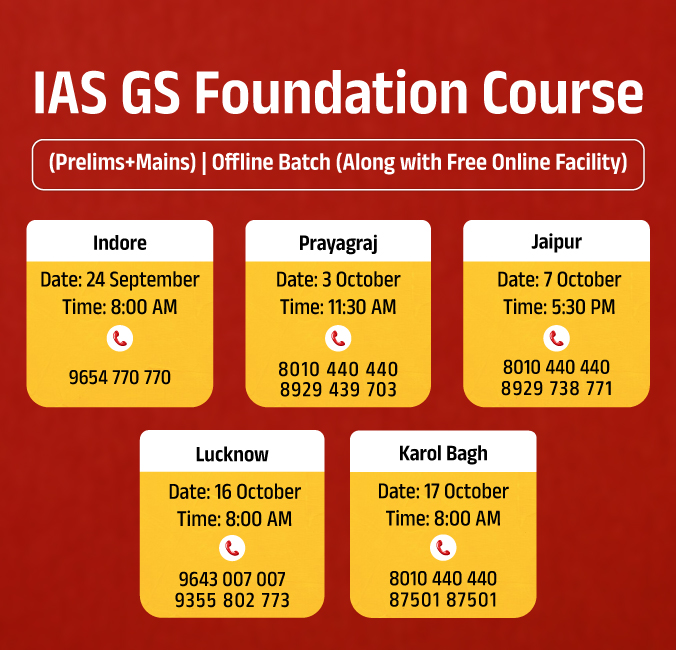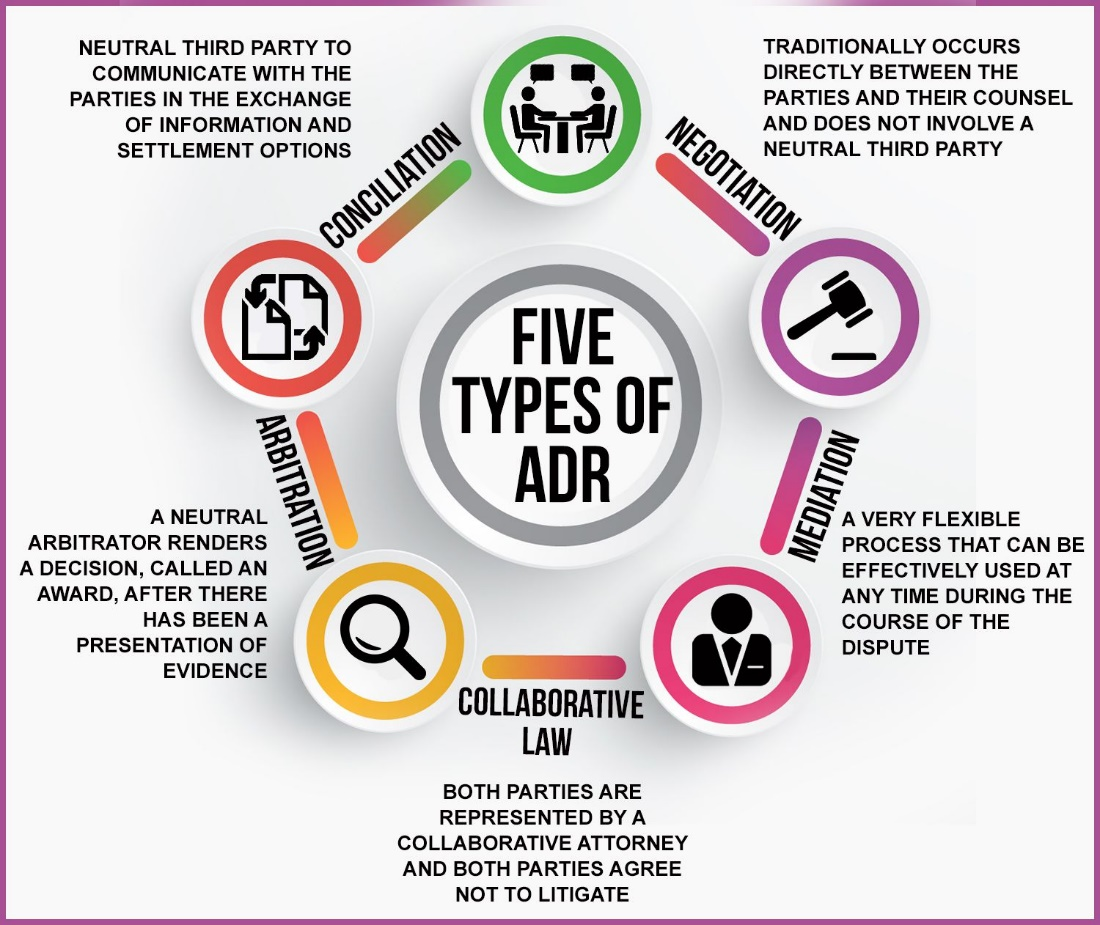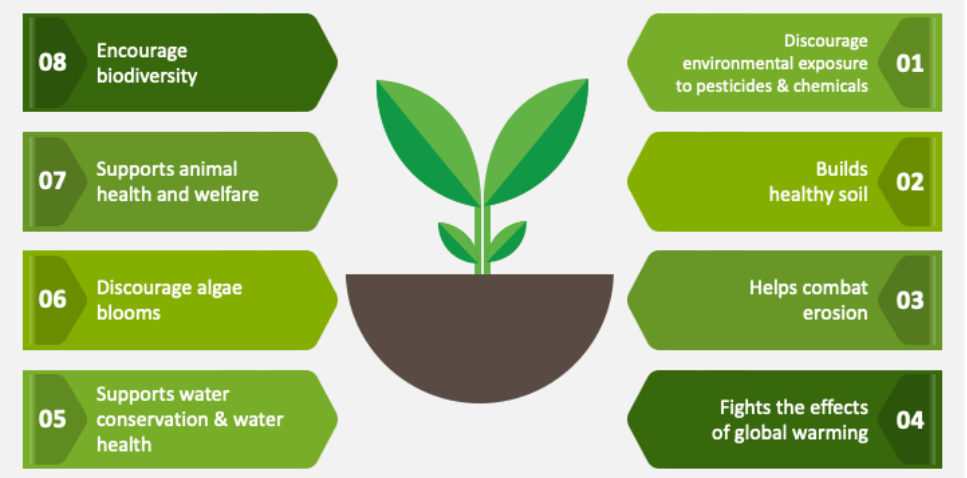Indian History
Maha Kumbh Mela 2025
For Prelims: Godavari River, Shipra River, Sangam, Ardh-Kumbh, Vijayanagar empires, Delhi Sultanate, and Mughals, UNESCO, Intangible cultural heritage
For Mains: Significance of Kumbh, Historical Evolution.
Why in News?
The Maha Kumbh Mela 2025, a sacred pilgrimage, will be held in Prayagraj from 13th January to 26th February 2025, drawing millions of pilgrims for spiritual purification, cultural celebration, and unity.
- The word ‘Kumbh’ comes from the root ‘kumbhak’ (the sacred pitcher of elixir of immortality).
What are the Key Facts About Kumbh Mela?
- About:
- It is the largest peaceful congregation of pilgrims on earth, during which participants bathe or take a dip in a sacred river. This gathering takes place at 4 different places, namely:
- Different Types of Kumbh:
- The Kumbh Mela is celebrated 4 times over a course of 12 years.
- At Haridwar and Prayagraj, Ardh-Kumbh Mela is held every 6th year.
- The Maha Kumbh Mela is celebrated at Prayag after 144 years (after 12 ‘Purna Kumbh Melas’).
- Maagh Kumbh is celebrated every year in the month of Maagh (Jan-Feb) in Prayagraj.
- Historical Evolution:
- Background: The Maha Kumbh Mela, transcribed by Adi Shankaracharya, originates from the Puranas, describing gods and demons battling for the sacred pitcher of Amrit, with Lord Vishnu (as Mohini) securing it from demons.
- Ancient Origins: During the Maurya and Gupta periods (4th century BCE to 6th century CE), the Kumbh Mela began as smaller gatherings of pilgrims from across the Indian subcontinent.
- Its significance increased with the rise of Hinduism, particularly under rulers like the Guptas who elevated its status.
- Harshavardhana king of the Pushyabhuti dynasty started the organisation of the Kumbh fair at Prayagraj.
- Medieval Patronage: Supported by royal dynasties like the Chola and Vijayanagar empires, Delhi Sultanate, and Mughals.
- Akbar promoted religious tolerance and granted Naga Sadhus the honour of leading the royal entry to the Mela in 1565.
- Colonial Period: British administrators, fascinated by the Kumbh Mela's scale and diversity, observed and documented the festival.
- In the 19th century, James Prinsep chronicled its ritualistic practices and socio-religious dynamics.
- Post-Independence Significance: The Kumbh Mela symbolises national unity and India's cultural heritage, recognized by UNESCO in 2017 as an intangible cultural heritage of humanity for its enduring ancient traditions.
- Kumbh 2019 Created 3 Guinness World Records:
- Largest traffic and crowd management plan.
- The biggest painting exercise of public sites under the Paint My City Scheme.
- Biggest sanitation and waste disposal mechanism.
- Significance of Kumbh:
- Spiritual Relevance: Bathing at the Triveni Sangam (Ganges, Yamuna, Sarasvati confluence) is believed to purify sins and lead to spiritual liberation (Moksha).
- Cultural Showcase: At the Kumbh Mela, devotional kirtans, bhajans, and traditional dances like Kathak, Bharatanatyam, and Kuchipudi, highlight themes of spiritual unity and divine love.
- Astrological Timing: Determined by the alignment of the Sun, Moon, and Jupiter, making the event highly auspicious for spiritual activities.
- At Nashik and Ujjain, if the mela is held when a planet is in Leo (Zodiac), it is called Simhastha Kumbh.
- Rituals and Activities:
- Shahi Snan (Royal Bath): Procession of saints and Akharas (spiritual orders) performing ceremonial baths. Also known as 'Rajyogi Snan,' it signifies the start of the Maha Kumbh Mela.
- The word 'akhara' originates from 'akhand,' meaning indivisible. Adi Guru Shankaracharya sought to unify ascetic organisations to safeguard the 'Sanatan' way of life.
- Akharas symbolise social order, unity, culture, and ethics, focusing on spiritual and ethical values. They emphasise virtue, morality, self-restraint, compassion, and religiosity, and are symbols of unity in diversity.
- Akharas can be categorised based on their favoured deity.
- Shaiva Akharas: Worship Lord Shiva in various forms.
- Vaishnava Akharas: Worship Lord Vishnu in various forms.
- Udaseen Akharas: Founded by Chandra Dev (son of Guru Nanak, the first Sikh Guru).
- Peshwai Processions: A grand spectacle featuring the traditional procession of Akharas, known as ‘Peshwai,’ which includes participants on elephants, horses, and chariots.
- Spiritual Discourses: The event features spiritual discourses led by revered saints and spiritual leaders, alongside a vibrant convergence of Indian music, dance, and crafts.
- Shahi Snan (Royal Bath): Procession of saints and Akharas (spiritual orders) performing ceremonial baths. Also known as 'Rajyogi Snan,' it signifies the start of the Maha Kumbh Mela.
UNESCO List of Intangible Cultural Heritage of Humanity
- This coveted list is made up of those intangible heritage elements that help demonstrate the diversity of cultural heritage and raise awareness about its importance.
- The list was established in 2008 when the Convention for Safeguarding of the Intangible Cultural Heritage came into effect.
- Intangible Cultural Heritage of India, recognised by UNESCO:
- Intangible cultural heritage is the practices, expressions, knowledge and skills that communities, groups and sometimes individuals recognise as part of their cultural heritage.
- Also called living cultural heritage, it is usually expressed in one of the following forms:
- Oral Traditions
- Performing Arts
- Social Practices
- Rituals and Festive events
- Knowledge and Practices concerning nature and the universe
- Traditional Craftsmanship
|
S.No. |
Intangible Cultu |
Year of Inral Heritage Element scription |
|
1 |
Kutiyattam, Sanskrit Theater |
2008 |
|
2 |
Tradition of Vedic Chanting |
2008 |
|
3 |
Ramlila, the Traditional Performance of the Ramayana |
2008 |
|
4 |
Ramman, Religious Festival and Ritual Theatre of the Garhwal Himalayas, India |
2009 |
|
5 |
Chhau Dance |
2010 |
|
6 |
Kalbelia Folk Songs and Dances of Rajasthan |
2010 |
|
7 |
Mudiyettu, Ritual Theatre and Dance Drama of Kerala |
2010 |
|
8 |
Buddhist Chanting of Ladakh: Recitation of Sacred Buddhist Texts in the Trans-Himalayan Ladakh region |
2012 |
|
9 |
Sankirtana, Ritual Singing, Drumming, and Dancing of Manipur |
2013 |
|
10 |
Traditional Brass and Copper Craft of Utensil Making among the Thatheras of Jandiala Guru, Punjab |
2014 |
|
11 |
Nowruz |
2016 |
|
12 |
Yoga |
2016 |
|
13 |
Kumbh Mela |
2017 |
|
14 |
Durga Puja in Kolkata |
2021 |
|
15 |
Garba of Gujarat |
2023 |
|
Drishti Mains Question Discuss how Kumbh Mela reflects India’s cultural diversity and spiritual heritage. |
UPSC Civil Services Examination, Previous Year Questions (PYQs)
Prelims:
Q1.With reference to the religious history of India, consider the following statements: (2020)
- Sthaviravadins belong to Mahayana Buddhism
- Lokottaravadin sect was an offshoot of the Mahasanghika sect of Buddhism
- The deification of Buddha by Mahasanghikas fostered Mahayana Buddhism
Which of the statements given above is/are correct?
(a) 1 and 2 only
(b) 2 and 3 only
(c) 3 only
(d) 1, 2 and 3
Ans: (b)
Q2.With reference to Manipuri Sankirtana, consider the following statements: (2017)
- It is a song and dance performance
- Cymbals are the only musical instruments used in the performance
- It is performed to narrate the life and deeds of Lord Krishna
Which of the statements given above is/are correct?
(a) 1, 2 and 3
(b) 1 and 3 only
(c) 2 and 3 only
(d) 1 only
Ans: (b)
Q3.With reference to India’s culture and tradition, what is ‘Kalaripayattu’? (2014)
(a) It is an ancient Bhakti cult of Shaivism still prevalent in some parts of South India
(b) It is an ancient style bronze and brass work still found in the southern part of the Coromandel area
(c) It is an ancient form of dance-drama and a living tradition in the northern part of Malabar
(d) It is an ancient martial art and a living tradition in some parts of South India
Ans: (d)
Mains
Q. Safeguarding the Indian art heritage is the need of the moment. Discuss (2018)


Governance
Reforming Khap Panchayat
For Prelims: Alternative Dispute Resolution (ADR), Caste-Based Councils, Conflict Resolution, Gender Inequality, Constitutional Rights, Legal Services Authorities Act (1987), Mediation Bill (2021), ADR system, Mediation, Human Rights, Unemployment, Education, Rural Development.
For Mains: Significance of Alternative Dispute Resolution in Dispute Resolution.
Why in News?
Khap Panchayats are sometimes seen in the news for multiple reasons, with some leaders advocating for progressive reforms to address key social and economic issues, including unemployment, education, and rural development.
- Efforts are also being made to modernise and regulate Khap Panchayats, integrating them into formal Alternative Dispute Resolution (ADR) systems for better governance and accountability.
What is Khap Panchayat?
- About: Khap Panchayats are traditional community-based councils primarily in North India, especially in Haryana and Uttar Pradesh, that function as informal judicial bodies.
- Originating centuries ago, they were formed among kinship groups (Khaps) to address social and governance issues within their communities.
- Historical Role: The system played a significant role in maintaining social order in rural societies, acting as a forum for conflict resolution within caste hierarchies, and operating parallel to formal legal systems while prioritising customary norms.
- Issues with Khap Panchayats:
- Patriarchal Practices: They are often associated with gender inequality, enforcing rigid social norms that restrict women's autonomy.
- Honor Killings: Infamous for opposing inter-caste and same-gotra marriages, sometimes sanctioning extreme measures like honour killings.
- Legality Concerns: Their decisions frequently violate constitutional rights, clashing with the principles of personal liberty, equality, and dignity.
- Caste and Social Inequities: Their focus on maintaining caste hierarchies reinforces discrimination and exclusion.
- Gender Dynamics and Evolving Roles of Khap Panchayats:
- Support for Women Athletes: Khaps have felicitated successful women sportspersons, contributing to a growing culture of sports among women.
- Gender Justice: Supported the 2023 wrestlers’ protest against sexual harassment, marking a shift towards gender-related activism.
- For instance, Meham Chaubisi, one of Haryana’s most influential Khaps, is playing a growing role in promoting justice, social change, and addressing women’s issues.
Supreme Court Ruling Related to Khap Panchayat
- The Shakti Vahini v. Union of India case, 2018, was a landmark judgment by the Supreme Court of India that addressed the issue of honour killings and inter-caste marriages.
- The Court ruled that honor killings are a violation of fundamental rights and emphasized the need for strict action against such crimes.
- It directed the State Governments to take proactive measures to prevent honor killings, including setting up special cells and providing protection to couples facing threats from their families.
What is Alternative Dispute Resolution (ADR) Mechanism?
- About:
- ADR is a non-adversarial method of dispute resolution that encourages cooperative efforts to reach mutually beneficial outcomes.
- It helps reduce court burdens and provides a satisfying experience for involved parties.
- ADR enables creative bargaining, fulfilling underlying interests and expanding solutions.
- Need for ADR:
- India's judicial system faces immense stress due to increasing case pendency and delays, highlighting the need for ADR methods.
- ADR ensures confidentiality, is cost-effective, and offers flexibility, often leading to creative solutions and improved relationships.
- Types of ADR Mechanisms:
- Arbitration: Disputes are resolved by an arbitral tribunal whose decision is binding and offers limited judicial intervention.
- Conciliation: A third party helps the disputing parties reach a mutually satisfactory settlement, with the option to accept or reject recommendations.
- Mediation: A mediator helps the parties communicate and settle disputes amicably, leaving control with the parties.
- Negotiation: A non-binding method where parties negotiate directly to resolve disputes without third-party involvement.
- Status of ADR in India:
- Statutory Backing: Legal Services Authorities Act (1987) and Arbitration and Conciliation Act (1996) promote out-of-court settlements.
- Plea-Bargaining: Introduced in the Code of Criminal Procedure (Amendment) Act, 2005 (now Bharatiya Nagarik Suraksha Sanhita) for pre-trial negotiations.
- Lok Adalats: Informal people's courts that resolve disputes without legal technicalities.
- Recent Developments: The Arbitration and Conciliation (Amendment) Bill (2021) addresses misuse, and the Mediation Bill (2021) recommends changes.
What Can Be Done to Make Khap Panchayat a Part of Formal ADR?
- Promote Alternative Dispute Resolution (ADR): Integrating Khap Panchayats into the formal ADR system by legalising their mediatory roles within a framework aligned with constitutional principles.
- Offer training to Khap leaders on mediation and arbitration techniques to enhance their capability for impartial dispute resolution.
- Legal Regulation: Formulate laws to define the scope and limitations of Khap Panchayat activities, ensuring decisions align with Indian laws and human rights.
- Set up oversight mechanisms to monitor their actions, preventing unconstitutional practices like honour killings or forced marriage annulments.
- Shift Focus to Development: Some Khap leaders advocate for progressive stances, addressing social and economic challenges like unemployment, education, and rural development.
- Efforts are underway to modernise or regulate Khap Panchayats, including integrating them into formal dispute resolution systems.
- Awareness and Accountability: Create public awareness campaigns to educate communities on the importance of constitutional rights and the legal system.
- Hold Khap Panchayats accountable for actions that undermine justice or equality.
- Collaboration with Formal Institutions: Facilitate partnerships between Khap Panchayats and local governance bodies to create inclusive decision-making structures.
- Involve judiciary representatives to ensure their decisions are legally sound.
Conclusion
Khap Panchayats, while deeply rooted in tradition, must evolve to function as effective tools of Alternative Dispute Resolution. By aligning their practices with constitutional values, fostering community development, and embracing reforms, they can retain cultural significance while contributing positively to rural governance. Transitioning Khaps into ADR bodies will require legal regulation, community awareness, and strong oversight to ensure justice, equity, and harmony in society.
|
Drishti Mains Question: What are the advantages of Alternative Dispute Resolution (ADR). How can integrating Khap Panchayats into the ADR system help alleviate the burden on India’s judicial system? |
UPSC Civil Services Examination, Previous Year Question
Prelims:
Q. With reference to National Legal Services Authority, consider the following statements: (2013)
- Its objective is to provide free and competent legal services to the weaker sections of the society on the basis of equal opportunity.
- It issues guidelines for the State Legal Services Authorities to implement the legal programmes and schemes throughout the country.
Which of the statements given above is/are correct?
(a) 1 only
(b) 2 only
(c) Both 1 and 2
(d) Neither 1 nor 2
Ans: (c)
Mains:
Q. Khap Panchayats have been in the news for functioning as extra-constitutional authorities, often delivering pronouncements amounting to human rights violations. Discuss critically the actions taken by the legislative, executive and judiciary to set things right in this regard. (2015)


Agriculture
Assessing the Potential of Natural Farming
For Prelims: Paramparagat Krishi Vikas Yojana (PKVY), Bharatiya Prakritik Krishi Paddhati (BPKP)/ZBNF, National Mission on Natural Farming (NMNF)
For Mains: Natural Farming: Significance, Challenges, Related Initiatives & Way Forward
Why in News?
An analysis conducted by the Food and Agriculture Organisation (FAO) in collaboration with the Andhra Pradesh (AP) government suggests that the AP model of natural farming has the potential to double the employment opportunities for farmers compared to industrial agriculture, thereby reducing overall unemployment and increasing farmers' incomes by 2050.
- The analysis was a part of ‘AgroEco2050’, a collective future-building exercise by the AP government, French agricultural research organisation and FAO.
Note:
- AgroEco2050 initiative aimed to assess two potential futures for agriculture, food, land use, nature, jobs, and incomes in Andhra Pradesh by 2050.
- One vision focused on intensifying conventional industrial farming, while the other explored scaling up natural farming (agroecology).
- The goal was to compare the implications of these two pathways and assess their coherence.
What is Natural Farming?
- About & Objective: Natural farming is a chemical-free approach that relies on locally available resources, including desi cow dung and urine, and emphasises traditional, indigenous practices.
- It eliminates the use of synthetic fertilisers and pesticides, promoting on-farm biomass recycling, including mulching, and pest management through biodiversity, botanical concoctions, and exclusion of all synthetic chemicals.
- Internationally, Natural Farming is considered a form of regenerative agriculture—a prominent strategy to save the planet.
- It has the potential to manage land practices and sequester carbon from the atmosphere in soils and plants, where it is useful instead of being detrimental.
- Current Scenario: Several states, including Andhra Pradesh, Karnataka, Himachal Pradesh, Gujarat, Uttar Pradesh, and Kerala, have already adopted natural farming and developed successful models.
- While still in its initial stages, the natural farming system is steadily gaining acceptance within the farming community.
Zero Budget Natural Farming (ZBNF)
- ZBNF in Andhra Pradesh:
- Introduced in 2016 by AP as an alternative to chemical-based, capital-intensive agriculture, ZBNF is implemented through Rythu Sadhikara Samstha (a non-profit created by the state’s agriculture department).
- The scheme, now called Andhra Pradesh Community Managed Natural Farming, aims to cover 6 million farmers over 6 million hectares.
- ZBNF in 2019 Union Budget:
- The ZBNF was also highlighted in the 2019 Union budget in the bid to double farmers’ income by 2022.
- It is promoted as ‘Bharatiya Prakritik Krishi Paddhati’ (BPKP) under the centrally sponsored scheme Paramparagat Krishi Vikas Yojana (PKVY) with a focus on encouraging traditional and indigenous agricultural practices.
Why Should Natural Farming be Adopted?
- Employment Impact: As per the FAO, by 2050, natural farming will employ twice as many farmers as industrial agriculture, with 10 million farmers in natural farming compared to 5 million in industrial farming.
- This shift would reduce unemployment, which is projected to rise to 30% in the industrial agriculture scenario, while in the natural farming scenario, unemployment would drop to 7%.
- Farmer Income: Natural farming is expected to be more profitable for farmers due to lower production costs (seeds, chemicals, irrigation, credit, and machinery) and better market prices for high-quality produce.
- The income gap between farmers and non-farmers would narrow significantly—from 62% in 2019 to 22% in 2050 under natural farming. This is nearly half the income gap of 47% expected in the industrial agriculture scenario by 2050.
- Land Use and Biodiversity: Under natural farming, the total cultivated area in 2050 would be 8.3 million hectares, compared to 5.5 million hectares under industrial agriculture.
- Natural farming would contribute to reversing land degradation, desertification, and improving biodiversity through regenerative and agroecological practices.
- Nutritional Benefits: Despite slightly lower yields per hectare, natural farming would produce more nutritious food per capita (5,008 kilocalories/day) compared to industrial agriculture (4,054 kilocalories/day).
- The food from natural farming would be richer in macronutrients, micronutrients, and fiber, and would contain no chemicals (fertilizers, pesticides) or antibiotics.
What are the Challenges Related to Natural Farming?
- Inadequate Farmer Training and Handholding: Farmers require more comprehensive training and continuous support to transition to and sustain natural farming practices.
- The current training systems are insufficient in addressing the full range of needs.
- Cumbersome Certification Process: The certification process for organic farming, particularly the Participatory Guarantee System (PGS-India), is seen as complicated and not farmer-friendly.
- Additionally, third-party certifications are expensive, which is a barrier for small farmers.
- The National Programme for Organic Production (NPOP), implemented by the Agricultural and Processed Food Products Export Development Authority (APEDA), grants organic farming certification through a process of third party certification.
- Additionally, third-party certifications are expensive, which is a barrier for small farmers.
- Poor Marketing Linkages: There is a lack of effective marketing systems for organic produce, leading to concerns about remunerative prices.
- Without proper buy-back or procurement provisions, such as those in the Pradhan Mantri Krishi Vikas Yojana (PKVY), farmers face difficulty in selling their products at fair prices.
- Insufficient Funding and Policy Support: Organic and natural farming programs receive minuscule budget allocations compared to the subsidies provided for chemical fertilizers, which is a significant barrier to scaling up efforts.
- There is also a lack of holistic understanding and support from the scientific community, which limits the case for change and investment in organic farming.
- Slow Progress in State-Level Implementation: While some states have organic policies, the implementation has been slow.
- Despite having policies, states like Karnataka, Kerala, and others have not been able to achieve significant coverage or meet their targets.
- Dependency on Chemical Inputs: A large part of the agricultural system remains heavily reliant on chemical inputs like fertilisers and pesticides, with organic alternatives still not being widely promoted or adopted.
- Low yields in natural and organic farming, coupled with high susceptibility to pests and weeds, deter small and marginal farmers from adopting these practices.
- For these farmers, who make up over 80% of India’s agricultural community, reduced production poses a serious threat to their livelihoods, contributing to the slow adoption of such farming methods.
Initiatives Related to Natural Farming in India
Way Forward
- Scientific Studies on Yields: A major challenge with natural farming is that it may result in lower yields for staple crops like wheat and rice, which could threaten food security for India’s large population.
- To address this, it is essential to conduct thorough and rigorous scientific research on crop yields from natural farming, especially for these key crops, before considering its widespread adoption.
- Localised Adoption: While natural farming may be beneficial on a localised level, it is suggested that its application be limited to supplementary foodstuffs rather than core staples.
- This would allow for a balance between sustainability and food security, with natural farming used for non-staple crops.
- Risk Mitigation for Food Security: To avoid potential risks to national food security, the adoption of natural farming must be carefully evaluated through scientific tests, especially regarding the productivity and yield of staple crops.
- Before transitioning from chemical to natural farming on a large scale, extensive studies are crucial. Sri Lanka's previous transition to organic farming, which included banning chemical fertilisers, led to reduced yields, especially in rice, jeopardising food security.
- This resulted in a surge in prices and widespread protests, highlighting the risks of hasty policy changes.
|
Drishti Mains Question Evaluate the potential of natural farming as a sustainable agricultural model in India. |
UPSC Civil Services Examination, Previous Year Question (PYQ)
Prelims
Q. How is permaculture farming different from conventional chemical farming? (2021)
- Permaculture farming discourages monocultural practices but in conventional chemical farming, monoculture practices are predominant.
- Conventional chemical farming can cause an increase in soil salinity but the occurrence of such phenomenon is not observed in permaculture farming.
- Conventional chemical farming is easily possible in semi-arid regions but permaculture farming is not so easily possible in such regions.
- Practice of mulching is very important in permaculture farming but not necessarily so in conventional chemical farming.
Select the correct answer using the code given below.
(a) 1 and 3
(b) 1, 2 and 4
(c) 4 only
(d) 2 and 3
Ans: (b)
Mains
Q. What are the present challenges before crop diversification? How do emerging technologies provide an opportunity for crop diversification? (2021)
Q. How has India benefited from the contributions of Sir M. Visvesvaraya and Dr. M. S. Swaminathan in the fields of water engineering and agricultural science respectively? (2019)


Important Facts For Prelims
Domestic Systemically Important Banks (D-SIBs)
Why in News?
Recently, the Reserve Bank of India (RBI) retained the State Bank of India, HDFC Bank and ICICI Bank as Domestic Systemically Important Banks (D-SIBs).
- The Reserve Bank designated SBI and ICICI Bank as D-SIBs in 2015 and 2016, and HDFC Bank joined them in 2017.
What are the Key Points About D-SIBs?
- About: D-SIBs are banks that are considered ‘Too Big to Fail’ (TBTF) within the domestic economy due to their size, complexity, and interconnections with the financial system.
- These banks are classified based on the potential economic disruption if they fail.
- Importance: D-SIBs are subjected to additional regulatory measures like capital buffers, stress tests, and recovery and resolution planning to enhance their resilience and ability to withstand financial shocks.
- Bucketing Structure: D-SIBs are classified into different buckets based on their systemic importance scores.
- Bucket 1 represents the lowest risk, while Bucket 4 represents the higher risk.
- The RBI has placed SBI in bucket 4, HDFC Bank in bucket 3 and ICICI Bank in bucket 1.
- Capital Requirements: Based on the bucket in which a D-SIB is placed, an additional common equity requirement has to be applied to it.
- SBI has an additional 0.80% common equity tier 1 (CET1) requirement, HDFC Bank has 0.40%, and ICICI Bank has 0.20%.
- Selection Process: The RBI follows a two-step process for identifying D-SIBs.
- Sample Selection: Not all banks are assessed. Only those with significant systemic importance based on size (banks with assets over 2% of GDP) are considered.
- Systemic Importance Assessment: Based on a range of indicators like lack of substitutability, interconnectedness etc a composite score is calculated for each bank, and those exceeding a certain threshold are classified as D-SIBs.
- Framework for D-SIBs: RBI issued a framework in July 2014 to ensure D-SIBs are well-capitalised to absorb losses and prevent systemic disruptions if they fail.
- Global Systemically Important Banks (G-SIBs): G-SIBs are large international banks whose failure would have a global impact.
- Financial Stability Board (FSB), in consultation with Basel Committee on Banking Supervision (BCBS) and national authorities identifies G-SIBs.
- As of 2023, there are 29 G-SIBs including JP Morgan Chase, Bank of America, Citigroup, HSBC, Agricultural Bank of China, Bank of China, Barclays and BNP Paribas.
Note:
- Common Equity Tier 1 (CET1) covers liquid bank holdings such as cash and stock. CET1 is a capital measure that was introduced in 2014 as a precautionary way to protect the economy from a financial crisis.
- The FSB is an international body that monitors and makes recommendations about the global financial system.
- FSB was established in 2009 under the aegis of G20.
UPSC Civil Services Examination, Previous Year Question (PYQ)
Prelims
Q.Consider the following statements: (2018)
- Capital Adequacy Ratio (CAR) is the amount that banks have to maintain in the form of their own funds to offset any loss that banks incur if the account-holders fail to repay dues.
- CAR is decided by each individual bank.
Which of the statements given above is/are correct?
(a) 1 only
(b) 2 only
(c) Both 1 and 2
(d) Neither 1 nor 2
Ans: (a)
Q.‘Basel III Accord’ or simply ‘Basel III’, often seen in the news, seeks to (2015)
(a) develop national strategies for the conservation and sustainable use of biological diversity
(b) improve banking sector’s ability to deal with financial and economic stress and improve risk management
(c) reduce the greenhouse gas emissions but places a heavier burden on developed countries
(d) transfer technology from developed countries to poor countries to enable them to replace the use of chlorofluorocarbons in refrigeration with harmless chemicals
Ans: (b)


Important Facts For Prelims
Black Hole Triple System
Why in News?
A recent study has discovered the first black hole triple system, located 8,000 light years (LY) away ( LY is the distance light travels in a year, approx 5.9 trillion miles (9.5 trillion km), differing from typical black holes , usually found as isolated entities or in binary systems.
What is a Black Hole Triple System?
- About: A black hole triple system consists of a central black hole and two orbiting stars, bound together by gravitational forces.
- It forms through a "direct collapse" process, where a massive star collapses inward without undergoing a supernova explosion, enabling nearby stars to remain gravitationally attached.
- The process of direct collapse, also termed a "failed supernova", creates a gentler formation mechanism, avoiding the violent ejection of surrounding matter.
- This unique structure challenges traditional models of black hole formation and demonstrates the complex gravitational dynamics that can exist in stellar systems.
|
Difference Between a Black Hole and a Black Hole Triple System |
||
|
Feature |
Black Hole |
Black Hole Triple System |
|
Components |
A singular black hole. |
One central black hole (V404 Cygni) and two stars. |
|
Orbital Details |
No other celestial body is necessarily bound to the black hole. |
- One star orbits every 6.5 days. - Another star orbits every 70,000 years. |
|
Location |
Found across the universe. |
Located about 8,000 light years away in the constellation Cygnus. |
|
Unique Features |
Often found in isolation or binary systems. |
Features gravitationally linked stars in a rare triple configuration. |
|
Behaviour |
May consume nearby matter and emit X-rays. |
The central black hole consumes the nearer star over time. |
|
Scientific Implications |
Supports standard models of black hole formation and stellar evolution. |
Challenges traditional black hole formation theories and provides insights into complex gravitational dynamics. |
|
Discovery Context |
Commonly studied through telescopic data. |
Accidentally discovered while analysing astronomical data of V404 Cygni. |
Black Hole
- A region in space with gravity so strong that no matter or light can escape.Typically forms from the collapse of a massive star in a supernova.
- Types of Black Holes:
- Stellar Black Hole: It is formed by the collapse of a single massive star
- Intermediate Black Hole: Their masses are between 100 and 100,000 times that of the sun.
- Supermassive Black Hole: Their masses ranging from millions to billions of times that of the sun, found at the centres of most galaxies including our own Milky Way galaxy.
UPSC Civil Services Examination, Previous Year Question (PYQ)
Prelims
Q. Consider the following phenomena: (2018)
- Light is affected by gravity.
- The Universe is constantly expanding.
- Matter warps its surrounding space-time.
Which of the above is/are the prediction/predictions of Albert Einstein’s General Theory of Relativity, often discussed in media?
(a) 1 and 2 only
(b) 3 only
(c) 1 and 3 only
(d) 1, 2 and 3
Ans: (d)


Rapid Fire
Wayanad Landslides and Disaster Status
The Union government has informed Kerala that the Wayanad landslides occurred in July 2024 cannot be declared as 'National Disaster', citing existing provisions and funds available for relief operations.
- Wayanad landslides caused major damage to lives and property, prompting the Kerala government to request Rs 900 crore from the Centre for relief and rehabilitation efforts.
- Centre’s Response: The Central Government clarified that there is no provision to declare any calamity a "National Disaster" under the existing guidelines of the State Disaster Response Fund(SDRF) and the National Disaster Response Fund (NDRF).
- Centre stated that disaster management is primarily the state's responsibility, with the Centre offering logistical and financial support.
- Financial relief for affected individuals comes from the SDRF for 12 notified natural disasters, including floods and landslides.
- In severe disasters, additional funds can be allocated from the NDRF after an assessment by an Inter-Ministerial Central Team (IMCT).
- Disaster: As per the Disaster Management(DM) Act 2005, a disaster is defined as “a casastrophe, mishap, calamity or grave occurrence in any area, arising from natural or man-made cause, or by accident.
- Section 46(I) and Section 48(I)(a) of the DM Act, 2005 mandate the creation of a NDRF at the national level and a SDRF at the state level.
Read more: Landslides in Wayanad


Rapid Fire
Europe’s Digital Euro
The European Central Bank (ECB) has introduced the digital euro as a new central bank digital currency (CBDC), designed to modernise the payment landscape in Europe.
- The digital euro aims to facilitate direct payments without intermediary banks or gateways, functioning as a digital version of cash that enables peer-to-peer transactions, even offline, while maintaining a level of anonymity similar to cash.
- Issued directly by the ECB, this CBDC is designed to lower transaction costs, including for micro-payments which are currently expensive with traditional banks.
- The ECB envisions the digital euro as a counterbalance to non-European payment providers and a tool to strengthen Europe’s digital sovereignty against global competitors, especially US companies.
- The Reserve Bank of India (RBI) launched the Digital Rupee (e₹) in 2022, as a CBDC.
- CBDCs are a digital form of a paper currency and unlike cryptocurrencies that operate in a regulatory vacuum, these are legal tenders issued and backed by a central bank.
Read more: Central Bank Digital Currency


Rapid Fire
Job for Deceased Staffers’ Kin
Recently, the Supreme Court (SC) ruled that compassionate employment is not a vested right but a relief measure for families after a government employee's death.
- The ruling addressed a case where appointment claims were made after significant delays, undermining the usual urgency for such applications.
- SC highlighted that claims for compassionate appointments must be pursued promptly.
- Appointments are contingent on statutory policies and guidelines and not a service condition or entitlement.
- If no policy or rule exists, appointments on compassionate grounds cannot be made.
- Compassionate employment serves as an exception to the rule of merit-based appointments, reflecting the state's responsibility to assist affected families.


Rapid Fire
58th Meeting of National Mission for Clean Ganga
The 58th Executive Committee meeting of the National Mission for Clean Ganga (NMCG) approved several pivotal projects aimed at Ganga River conservation, addressing environmental challenges.
- Approved Projects: Environmental Flow Assessment was approved to assess the environmental flow of Chambal, Son, Damodar, and Tons rivers for enhancing water quality and biodiversity.
- Dolphin Rescue Initiative was approved to develop a Dolphin Ambulance and raise awareness for Ganga River dolphin conservation.
- Turtle Conservation was approved to rehabilitate endangered turtles and reintroduce threatened species in the Ganga basin.
- Kolkata Septage Treatment Plant (STP) Rehabilitation was approved for the rehabilitation of the 50 millions of litres per day (MLD) STP at Keorapukur to improve water purification.
- Rag-Rag Mein Ganga Series was approved with a budget for the third season of the travelogue series to promote Ganga’s conservation and cultural heritage.
- NMCG: It was registered as a society in 2011 under the Societies Registration Act 1860. It is the implementation wing of National Ganga Council (set in 2016; which replaced the National Ganga River Basin Authority (NRGBA).
- The objective of the NMCG is to reduce pollution and ensure rejuvenation of the Ganga river.
Read more: 57th Meeting of National Mission for Clean Ganga












